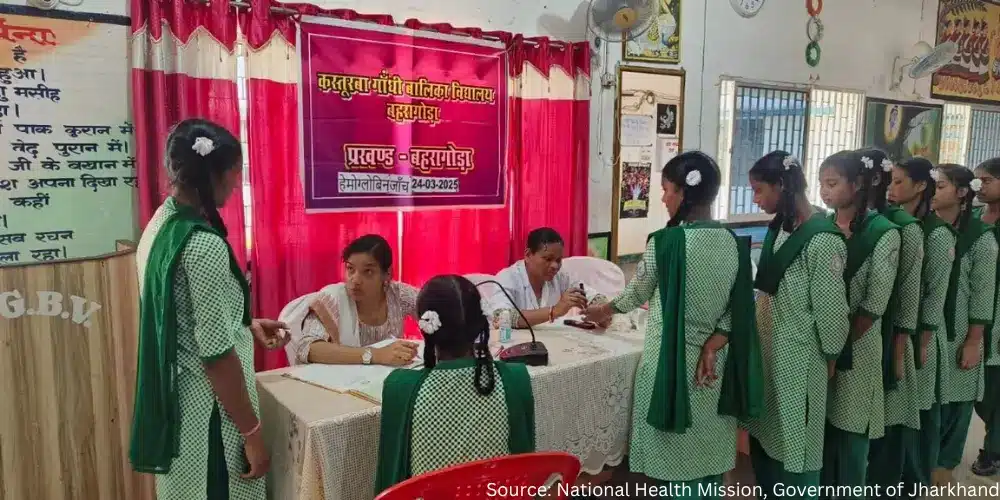Latest
The complex landscape of surrogacy in India: Law, ethics, and parenthood pathways
Surrogacy in India presents a complex landscape, offering hope to infertile couples while navigating strict laws and societal stigma. Even as it promises joy, surrogacy remains clouded by complexity, controversy, and unresolved grey areas
Author
Author
- admin / 26 minutes

- 0
- 12 min read

Author
Parenthood is often described as one of life’s greatest joys. Yet, for many couples, this journey is marked by unexpected obstacles—miscarriages, repeated fertility treatments, and the deep emotional and financial toll of infertility.
In fact, World Health Organisation (WHO) estimates that one in six people worldwide—around 17.5 per cent of the global adult population—experience infertility at some stage of their reproductive lives. These numbers highlight not only the medical but also the psychological and social burden of childlessness.
It is within this fragile landscape of parenthood that surrogacy emerges as a way of hope. For couples unable to conceive or carry a pregnancy to term, it offers the possibility of holding a biological child despite the odds. Yet, even as it promises joy, surrogacy remains clouded by complexity, controversy, and unresolved grey areas.
Understanding surrogacy
Surrogacy is an arrangement in which a woman agrees to carry and give birth to a child on behalf of another individual or couple. It can take two forms. In traditional surrogacy, the surrogate’s egg is fertilised with the intended father’s sperm, which makes her the biological mother of the child she delivers. In gestational surrogacy, an embryo created using the intended parents’ or donors’ gametes is implanted in the surrogate’s womb, meaning she has no genetic connection to the child.
Within these medical approaches, surrogacy can be structured in different ways. Altruistic surrogacy refers to an arrangement where the surrogate does not receive any financial reward beyond reimbursement for medical and pregnancy-related expenses. The motivation here is usually compassion—a desire to help another person or couple experience the joy of parenthood. On the other hand, commercial surrogacy involves a contractual agreement in which the surrogate receives monetary compensation in addition to medical coverage. The amount may vary depending on factors such as the country, local regulations, and the specific terms of the agreement.
Couples and individuals choose surrogacy for many reasons. Some turn to it after facing repeated miscarriages or failed in-vitro fertilisation (IVF) attempts. Others may suffer from medical conditions such as the absence of a uterus, uterine abnormalities, or illnesses that make pregnancy dangerous. For some, particularly those of advanced maternal age, surrogacy becomes the only viable path to parenthood. In countries where the law permits, same-sex couples and single parents also seek surrogacy to fulfil their dream of raising biological children.
Surrogacy: the journey so far
The first reported surrogacy arrangement took place in 1980 in the United States when a woman named Elizabeth Kane agreed to carry a child for another couple, sparking immediate ethical debates about the commodification of motherhood. A few years later, in 1985, the first successful gestational surrogacy pregnancy was achieved, marking a significant scientific breakthrough by separating surrogacy from genetic motherhood and expanding its possibilities.
Between 1999 and 2013, the United States recorded 30,927 surrogate pregnancies, resulting in 13,380 deliveries and 18,400 infants born. Of these, 8,581 were singleton pregnancies, 4,566 were twin pregnancies, and 233 were triplet pregnancies. These figures underline both the success of assisted reproductive technologies and the medical risks linked with high-order multiple births, a frequent outcome of fertility treatments.

In India, surrogacy began attracting wider attention in the early years of the 21st century, with commercial surrogacy being allowed unofficially in 2002. The largely unregulated growth of commercial surrogacy led to the rise of “surrogacy tourism”, with foreign couples increasingly turning to the country for affordable arrangements. The boom, however, raised ethical concerns and highlighted the exploitation of vulnerable women, and surrogacy soon became the subject of courtroom battles that would go on to shape public debate around the issue.
One of the most prominent cases in India’s surrogacy debate was the 2008 Baby Manjhi Yamada v. Union of India. A Japanese couple had come to Gujarat to have a child through surrogacy, but their marriage fell apart before the baby was born. While the father sought custody, Indian law at the time did not allow a single man to adopt a girl child. The case revealed how deeply unprepared Indian laws were to deal with the complexities of cross-border surrogacy and parenthood—in fact, during the proceedings, it was pointed out that “there is no law governing surrogation in India and in the name of surrogation, lot of irregularities are being committed.”
Another crucial ruling in the same year wasJan Balaz v. Anand Municipality. Here, a German couple engaged an Indian surrogate who gave birth to twins in Gujarat. The children, however, were left stateless—unable to obtain Indian passports since they were not considered Indian citizens, and equally unrecognised under German law, which did not permit surrogacy. The Gujarat High Court granted the children exit permits so the couple could take them to Germany, where they were later allowed to adopt them. This case underscored the international legal vacuum around surrogacy and the precarious position of children born through such arrangements.
Each of these cases highlighted the surge in the cases of surrogacy, and the acute lack of clear laws that regulate these procedures. Despite this, surrogacy continued to function in the country, in a largely unregulated manner—sometimes at the physical, economical and health costs of the women involved.
A “UN Special Rapporteur on Surrogacy Arrangements and the Sale and Sexual Exploitation of Children” report highlighted the way the babies were commodified, and women were exploited in the commercial surrogacy market. “In 2010, young Adivasi girls were trafficked, traded, enslaved, raped and made to conceive through surrogacy six times to sell the children into adoption. The surrogacy trafficking trade used the same network that was used for domestic work and sex trade from the poor regions of India into urban areas. These unmarried girls are impregnated with embryos without their consent,” it cited as an example.
Even as the government banned foreign nationals from pursuing surrogacy in India in 2015, the practice kept growing. While there was no official data on the number of surrogacy cases in India, the government in 2019 had said in an answer to a question in Parliament that they had “noticed a surge in the surrogacy cases.” It would not be until 2021 that the government to step in and impose a ban on commercial surrogacy through the Surrogacy (Regulation) Act, 2021.
What the law says in India
Across the world, surrogacy laws vary widely. Countries like Ukraine and some US states allow commercial surrogacy under regulatory frameworks, while others, including France and Germany, prohibit all forms outright. India has seen its own dramatic shifts in regulation.
Under the Surrogacy (Regulation) Act, 2021, and its 2022 rules, surrogacy is strictly regulated. Commercial surrogacy is now banned, allowing only altruistic arrangements. Intending couples in India must meet strict eligibility criteria. They must be legally married for at least five years, with the wife aged between 25 and 50 years and the husband between 26 and 55 years. The couple should not have any living child—whether biological, adopted, or born through surrogacy—except in cases where the existing child suffers from a disability or life-threatening disorder.
The 2024 amendments now permit married couples to use donor gametes if one partner has a medical condition certified by the District Medical Board, provided the child has at least one gamete from the intended couple. Single women must use their own eggs alongside donor sperm.
Under the law, the eligibility and conditions for becoming a surrogate mother have been laid out. Any willing, ever-married woman between the ages of 25 and 35 who has at least one biological child of her own may act as a surrogate. She must also be a close relative of the intending couple, though experts point out that the law does not define what it means by close relative. She can be a surrogate only once in her lifetime, with up to three attempts permitted if embryo transfer fails.
She must be certified as physically and mentally fit by a registered medical practitioner and is prohibited from using her own gametes for the surrogacy. As mentioned, the Act allows only altruistic surrogacy—meaning the surrogate cannot receive monetary compensation beyond medical expenses and insurance coverage. Insurance must extend for 36 months to cover postpartum complications, including death, arising from the pregnancy or delivery. Importantly, the surrogate has the right to withdraw her consent at any stage before the embryo transfer, and, if required, she may also terminate the pregnancy under the provisions of the Medical Termination of Pregnancy Act, 2019.
It is important to note that in India, surrogacy is restricted to legally married couples and ever-married single women, such as widows or divorcees. The law explicitly bars several groups from availing surrogacy services, including couples who already have a child, foreign nationals, individuals in live-in relationships, single men, unmarried women, same-sex couples, and widowers.
The darker side of surrogacy
Even under the new law, surrogacy has not escaped controversy. Reports of illegal surrogacy rackets and exploitation continue to surface across the country.
Earlier this year, in Hyderabad, police busted an alleged sprawling illegal surrogacy and baby-selling racket operating under the guise of fertility treatments. The kingpin, Dr Athaluri Namratha alias Pachipala Namratha, a 64-year-old doctor and owner of Universal Srushti Fertility Centres, was arrested along with seven others from across Telangana and Andhra Pradesh.
Against this backdrop, experts emphasise why surrogacy still holds medical importance. Dr Prof. Abha Majumdar, Director and Head of the Centre of IVF & Human Reproduction at Sir Ganga Ram Hospital, explained that surrogacy, though a small part of IVF, remains essential in rare cases: “There are a few girls who are born without a uterus, or who have had it removed at a very young age due to disease, or even after their first childbirth to save their lives. In some cases, the uterus cannot carry a pregnancy at all because it repeatedly leads to miscarriages. Such people truly need surrogacy,” she explained.
Dr Majumdar also outlined the step-by-step process: first, doctors recommend surrogacy for a patient through a formal letter citing medical reasons such as repeated IVF failures or miscarriages. This is reviewed by the state-level medical board under the surrogacy authority. If approved, the couple must then present a surrogate. “The surrogate has to provide a legal affidavit stating her age, that she has no more than one child, and that she is ready to do surrogacy without charging money,” she said.
These documents, along with medical certificates, are then verified by magistrates and lawyers. Only after this approval does the couple return to the clinic. “The lady comes to us with the approved surrogate and we go ahead with making embryos and whatever is necessary,” the doctor who has decades of experience explained.
However, highlighting the darker side, she observed that earlier, when commercial surrogacy was permitted, it became “almost like a fashion,” but the shift to altruistic surrogacy has changed things. Still, she admitted loopholes remain: “People really find ways to do commercial surrogacy in the garb of altruistic surrogacy. They don’t show that any money is being charged or given, but it is happening.”
The issue, she added, is compounded by lingering social stigma. Drawing parallels with IVF, she said, “every new step has social stigma—whether it was widow remarriage, stopping sati, or IVF. For almost 20 years, IVF had stigma; even doctors who had children through IVF would avoid public functions. Over time, that changed, and I believe stigma around surrogacy will also reduce.” She acknowledged the psychological burden: while intended parents may feel they are missing out on the joy of pregnancy, they usually accept the child as their own when gametes are genetically theirs. “The surrogate mothers usually say that while carrying the baby, they knew it was to be given away, so they did not form attachments. Still, altruistic surrogacy is very difficult to find.”
What worries her the most is the escalating cost of surrogacy. Ideally, the total expense should be comparable to a normal pregnancy plus IVF costs—around Rs 3–3.5 lakh, including one or two attempts if needed. Paperwork, which should cost no more than Rs 50,000, is often inflated because lawyers claim that without their services, approvals could be delayed for years. “There are so many officials involved, and if the highest authorities do not hold hearings, the work doesn’t happen. Lawyers exploit this, charging anywhere from Rs 2 lakh to Rs 10 lakh for the same process,” she said.
The hope?
Surrogacy is gradually gaining social acceptance, in part thanks to public figures who have openly shared their experiences. Celebrities like Priyanka Chopra Jonas, Shilpa Shetty, and filmmaker Karan Johar have spoken about choosing surrogacy, sparking broader conversations about parenthood and alternative family structures. For many, these stories highlight the joy of raising a child and experiencing parenthood against all odds.
Legal progress has also offered hope. In 2024, the Kerala High Court delivered a landmark ruling clarifying that an intending woman is eligible for surrogacy until the age of 50, with eligibility ending only upon turning 51. The court emphasised that age provisions should protect ethical surrogacy practices without imposing unnecessary restrictions, recognising that motherhood is a deeply personal and fundamental right, and its permanent denial must be approached with utmost caution.
On the question of extending surrogacy to same-sex couples, Dr Majumdar pointed to constitutional limitations. She explained, “Our Constitution has not allowed same-sex couples legal marriage. In other countries where same-sex marriage is legal, surrogacy is allowed too. Here, if the law itself does not recognise them as couples, how can we push for surrogacy? First, the law must change to recognise them as married partners. Only then can surrogacy be extended to them.”
Also read: IVF Specialist Petitions Delhi High Court to Allow Embryo Donation









